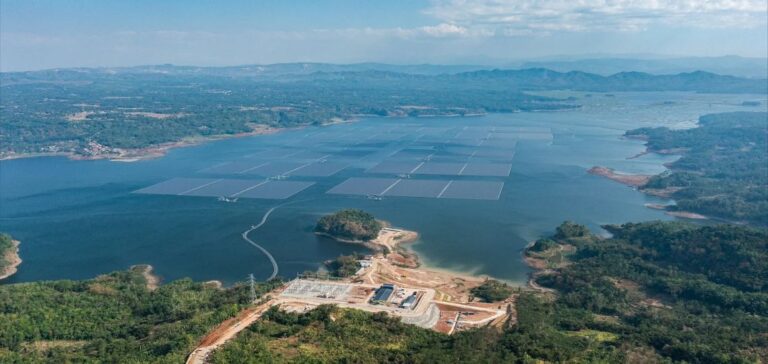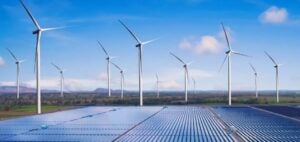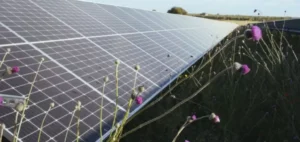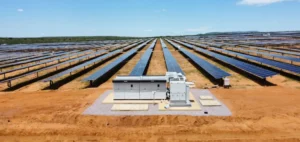Chinese company Power Construction Corporation of China (PowerChina) has completed the Cirata floating photovoltaic power plant in Indonesia, marking the commissioning of the largest facility of its kind in Southeast Asia. With a capacity of 192 megawatts, the project is located on the Cirata Reservoir in West Java Province and has been feeding the national grid since November 2023.
A result of a joint venture between Indonesian state-owned utility Perusahaan Listrik Negara (PLN) and Emirati firm Masdar, the infrastructure is Indonesia’s first large-scale floating photovoltaic (FPV) project. The facility generates 300,000 megawatt-hours per year, equivalent to the electricity consumption of 50,000 households. It accounts for 25% of Indonesia’s current renewable energy output.
Technical design adapted to local conditions
Site development required technical innovations to accommodate the reservoir’s geographical and climatic specificities. Faced with irregular underwater terrain, PowerChina designed an anchoring system combining metal shear keys and concrete counterweights. Wind tunnel tests and digital simulations helped optimise the layout of the panels and the structure’s stability under high wind conditions.
Indonesian President Joko Widodo praised the commissioning of the facility, highlighting its role in the national strategy to reduce greenhouse gas emissions. The Cirata plant is expected to save 117,000 tonnes of coal annually and significantly reduce emissions associated with electricity generation.
Industrial cooperation and regional expansion
This project underscores the growing importance of multinational partnerships in the development of energy infrastructure across Southeast Asia. PowerChina, which continues to expand its activities in the region, operates within an industrial cooperation framework combining specialised engineering and international financing to meet the energy objectives of partner countries.
The technical success of the Cirata site may pave the way for similar initiatives in Indonesia and other island markets constrained by limited land availability for ground-based solar installations.






















